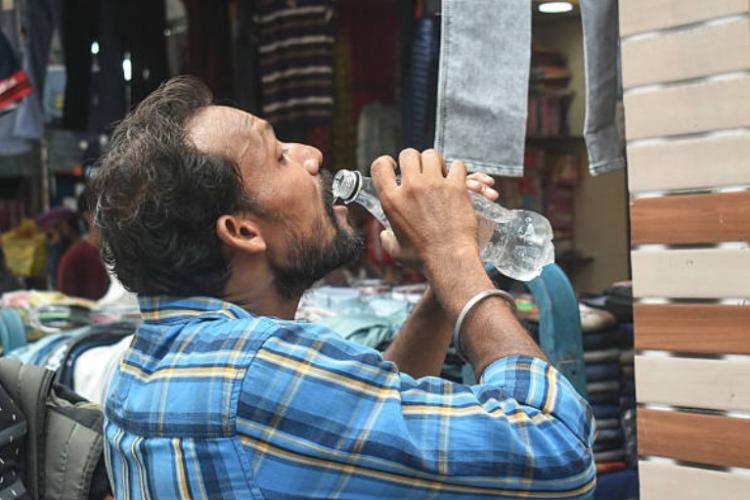
Heatwaves forecast in India: The latest forecast by the India Meteorological Department paints a grim picture of the upcoming summer. For the second consecutive year, the IMD has predicted an “above-normal number of heatwave days” across most parts of the country. With extreme heat episodes becoming longer and more intense, the warning is clear: climate change is here, and India is among the worst-affected.
The big question now is whether Indian cities are ready to protect their citizens, especially the most vulnerable, from this mounting crisis.
From April to June, most regions are expected to experience not just higher-than-usual temperatures but also prolonged heatwaves, some lasting more than 10 days — a marked increase from the four-to-seven-day spells of the past. In 2023, parts of the country endured heatwaves stretching beyond two weeks, severely affecting health, productivity, and infrastructure.
READ | Toll collections: Are motorists getting bang for the buck?
Heatwaves likely across regions
Over the past decade, the impact of global warming on Indian summers has become unmistakable. The once-distinct spring season has all but vanished, and heatwaves are no longer confined to traditionally hot zones like northern, central, and eastern India. Only a few regions — the extreme south, northeast, Jammu & Kashmir, and Himachal Pradesh — may be spared the worst this year.
The urgency of the IMD’s warnings is already playing out on the ground. On April 7, the department issued a red alert for Gujarat, an orange alert for parts of Rajasthan, and yellow alerts for several northern and western states, signalling the start of an intense summer. An IMD scientist noted that heatwaves are already gripping the Saurashtra-Kutch region and will persist in Rajasthan for the next several days. North Indian states such as Punjab, Haryana, and even Delhi — currently recording temperatures 3°C above normal — may soon face heatwave-like conditions.

While a western disturbance may bring temporary relief to the Western Himalayan region between April 8 and 10, large parts of the country are staring at days of searing heat with limited respite.
The IMD’s forecast aligns with the broader global trend: rising temperatures, more frequent heatwaves, and worsening public health outcomes. These changes disproportionately affect the poor and vulnerable, increasing the risk of heat-related illnesses and reducing income through lost workdays. While research into the full health implications is ongoing, experts unanimously stress the urgency of preventive measures.
Unlike many other consequences of climate change, heatwaves are largely manageable — but only with timely and effective action. Several Indian states and cities have developed heat action plans (HAPs), designed to mitigate the effects of extreme heat. These include low-cost, practical steps like installing shaded areas in public spaces, ensuring access to clean drinking water, distributing oral rehydration salts, and adjusting school and work hours.
Weak responses can be fatal
However, implementation remains inconsistent. Despite improved forecasting, response mechanisms remain weak. A recent study by the Delhi-based Sustainable Futures Collaborative found that authorities tend to focus on short-term, reactive measures — such as water distribution or temporary cooling shelters — rather than long-term strategies like urban greening, rejuvenating water bodies, or building climate-resilient infrastructure.
As the frequency and severity of heatwaves increase, India must go beyond firefighting. Long-term interventions that cool urban environments are vital. These include developing green belts, expanding parks, restoring wetlands, and rethinking how our buildings are constructed.
Answer lies in traditional architecture
One promising solution lies in traditional architecture. A growing number of architects and sustainability experts are advocating for mud houses — an ancient, yet highly effective, response to modern climate challenges. In a United Nations feature titled “India’s Mud Houses: Our Solution to Climate Change?”, experts noted how conventional construction materials like cement and steel contribute to higher indoor temperatures and massive carbon footprints. Mud structures, by contrast, offer natural insulation due to their high thermal mass, absorbing heat during the day and releasing it at night.
This reduces the need for air conditioners and refrigerators — appliances that not only consume high amounts of electricity but also emit potent greenhouse gases. Thus, mud buildings address two major concerns: reducing the reliance on energy-intensive cooling and lowering construction emissions.
A standout example is a residence in Delhi’s Sainik Farms, which gained attention for its low indoor temperatures and significantly better air quality, even as the capital battled hazardous AQI levels. What set this house apart was its eco-conscious design: more than 15,000 plants, lime mortar instead of cement, and stone tiles instead of concrete slabs. The result? An indoor AQI between 10 and 15 — an extraordinary achievement in Delhi’s pollution-choked environment.
This isn’t an isolated experiment. A quiet revolution is underway in Indian architecture, with more urban homes being built with the environment in mind. It’s time for policymakers to recognise and promote such sustainable practices through incentives, regulations, and public awareness campaigns.
The stakes couldn’t be higher. A joint study by SFC and researchers from King’s College London, Princeton, Harvard, and the University of California warns that the government must move beyond token measures. Among their key recommendations: expand access to cooling for heat-exposed populations, develop insurance mechanisms for heat-related income loss, improve fire response systems, and upgrade power infrastructure to cope with peak summer demand.
As climate change accelerates, India’s urban planners will need to rethink the very blueprint of our cities. Heat-retaining concrete jungles must give way to green, breathable spaces. The IMD’s latest alert should serve as a wake-up call: India must urgently heat-proof its towns and cities, or risk being overwhelmed by a new, and increasingly unforgiving, climate reality.
